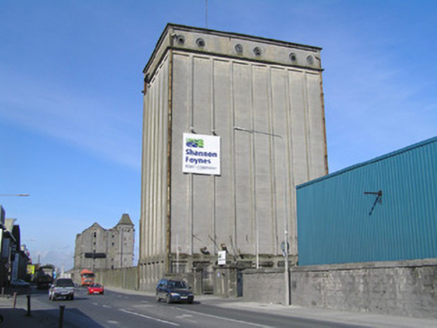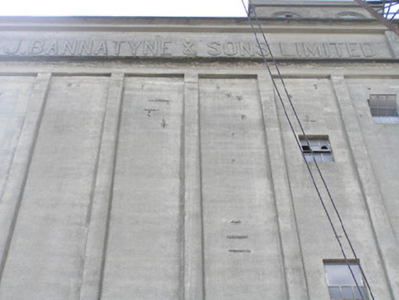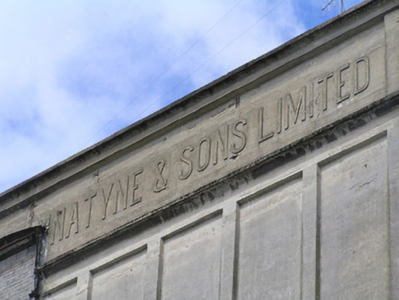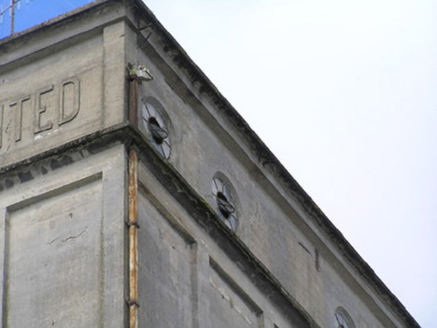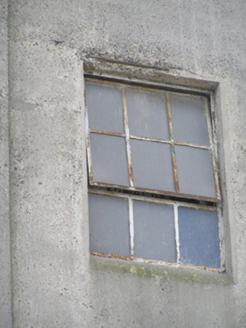Survey Data
Reg No
21516001
Rating
Regional
Categories of Special Interest
Architectural, Historical, Technical
Original Use
Tank/silo
In Use As
Tank/silo
Date
1920 - 1935
Coordinates
156694, 156487
Date Recorded
24/05/2005
Date Updated
--/--/--
Description
Freestanding multiple-storey reinforced concrete former silo, built c. 1935, with an eight-bay east and west elevation and six-bay north and south elevation. Each bay expressed by a window opening to ground floor level, and an oculus to parapet level on the east and west elevation (except for the third and sixth bays), and vertical concrete piers which articulate each elevation. Further two-storey upshot rises from behind the parapet to the northwest corner. The parapet on the south elevation reads in raised concrete lettering: 'J. Bannatyne & Sons Limited'. Flat-roofed structure hidden behind parapet wall. Square-profile cast-iron rainwater goods. Reinforced concrete walls with eight vertical bays articulated by concrete piers. Square-headed window openings, one to each bay at ground floor level and illuminating stair hall on north elevation, otherwise elevations are unfenestrated. Each opening has rendered reveals, no sills, and retaining multiple-pane steel windows with centrally-hung pivoting upper casements. Rendered reveals also to oculi with centrally-hung pivoting metal windows. Some openings boarded and blocked-up. Square-headed door opening to south elevation with plank timber door. A further door opening to north with double-leaf plank timber door. Located facing the road side on a large industrial site enclosed from the road by squared and coursed rubble limestone wall east of silo with entrance forming quadrant screen walls with terminating piers flanking pedestrian entrance. To west of silo the truncated remains of a concrete industrial building, encloses the site. The northern boundary contains a wet dock and the site once functioned as a private quay.
Appraisal
A striking silo of great significance to the industrial (and maritime) heritage of Limerick City and the employment of concrete as a building material to quite breathtaking effects. The vertical emphasis articulated by the bay piers and the lack of fenestration reinforces the presence of the structure on the Dock Road. It, along with Bannatyne's Italianate corn store further west, are among the most important industrial buildings to survive in Limerick City. A particular case could be made for the conversion of the silo to an alternative civic use.



